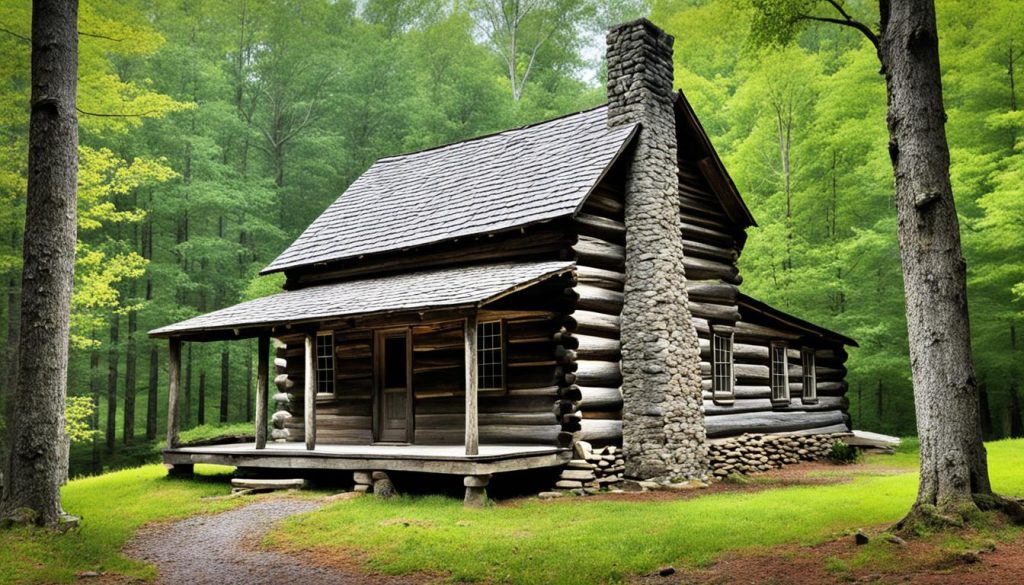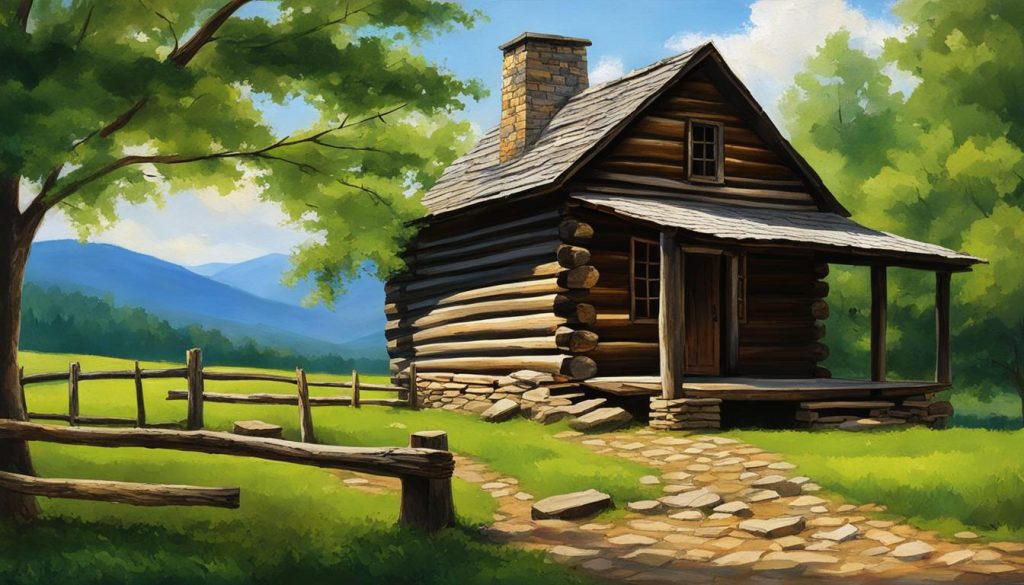
Step Inside John Oliver Cabin Cades Cove
Discover the rich history and rustic charm of the John Oliver Cabin, nestled in the picturesque surroundings of Cades Cove within Great Smoky Mountains National Park. This historic cabin serves as a testament to the early settler life and the enduring legacy of John Oliver, one of the area’s first permanent settlers.
Built in the early 1820s, the John Oliver Cabin was originally intended as a honeymoon getaway for John Oliver’s son, William. However, it has since become an iconic symbol of the early pioneering spirit and architectural heritage of the region. As you step inside this well-preserved cabin, you’ll be transported back in time to a bygone era.
The John Oliver Cabin is a single-pen Smokies log cabin, showcasing the craftsmanship of British and European immigrants who settled in the area. With its saddle-notched log construction, the cabin exemplifies the resourcefulness and ingenuity of early settlers in creating sturdy and functional homes using the materials at their disposal.
Inside, you’ll find a cozy fireplace that provided warmth and sustenance for the inhabitants. The loft, accessed by a simple ladder, served as additional sleeping quarters. The entire structure is surrounded by picturesque paths and a traditional split-rail fence, adding to the rustic charm of the cabin.
As you explore the Great Smoky Mountains National Park, make sure to step inside the John Oliver Cabin in Cades Cove. Immerse yourself in the rich history and experience the way of life of early settlers who forged a path amidst the wilderness. It is a journey that will leave you with a deep appreciation for the enduring spirit of the pioneers.
History of the John Oliver Cabin
In the 1820s, John Oliver and his wife, Lurena, became the first permanent settlers in the picturesque area of Cades Cove. They arrived before a grist mill was established and when the only access was through a primitive trail. It was during this time that John Oliver built a cabin, not as his primary residence, but as a honeymoon cabin for his son, William Oliver.
The original cabin, which served as John Oliver’s main residence, was located about 50 yards behind the current John Oliver Cabin that stands today. While the cabin has since become associated with John Oliver, it holds the historical significance of being built for his son’s marital bliss in the early settlement days.

Through the years, the John Oliver Cabin has stood as a testament to the determination and resilience of the early settlers in Cades Cove. It is a tangible link to the past, offering visitors an opportunity to experience firsthand the ruggedness and charm of a bygone era.
Architecture and Features of the Cabin
The John Oliver Cabin is a prime example of a single-pen log cabin, showcasing the architectural style of the time. The logs used in the construction were hewed and saddle-notched, without the use of nails or pegs. The gaps between the logs were filled with mud to provide insulation and protection from the elements.
The cabin features a stone chimney, adding both functionality and aesthetic appeal. The chimney served as a vital component for heating and cooking, ensuring that the occupants could stay warm and prepare meals even in harsh weather conditions.
Simple narrow windows let in natural light and offer picturesque views of the surrounding landscape. These windows, while small in size, provided much-needed ventilation and glimpses of the outside world to the inhabitants of the cabin.
The doors of the John Oliver Cabin are made of hickory and feature drop latches for security and ease of use. These simple yet sturdy doors allowed entry into the cabin and protected its occupants from the elements, ensuring a safe and comfortable living space.
The interior of the cabin consists of a main room with a fireplace as the focal point. The fireplace served as the primary source of heat and also provided a means for cooking and communal gathering. Adjacent to the main room, a loft offered additional sleeping quarters and storage space.
The construction techniques and materials used in the John Oliver Cabin reflect the resourcefulness and craftsmanship of early settlers. This log cabin stands as a testament to their resilience and ability to create functional and cozy spaces in the midst of wilderness and uncertainty.
Significance and Preservation of the Cabin
The John Oliver Cabin holds a significant place in the history of Great Smoky Mountains National Park. As one of the oldest structures in the park, dating back to the early 1820s, it stands as a testament to the enduring legacy of the early settlers who shaped the region. This historic structure provides a glimpse into the past, capturing the essence of a bygone era.
Meticulously maintained by the national park, the John Oliver Cabin has been preserved with great care to maintain its authenticity. Despite the passage of time, the cabin remains true to its original appearance, allowing visitors to step back in time and experience the way of life of those early settlers. The ruggedness and charm of the cabin provide an authentic and immersive experience.
While occasional repairs and maintenance are necessary, every effort is made to ensure that the cabin retains its historic integrity. The national park’s commitment to preserving this historic structure allows generations to appreciate and understand the rich heritage of the Cades Cove area. The John Oliver Cabin stands as a symbol of the past, offering a glimpse into the hardships and triumphs of the early settlers in the Great Smoky Mountains National Park.